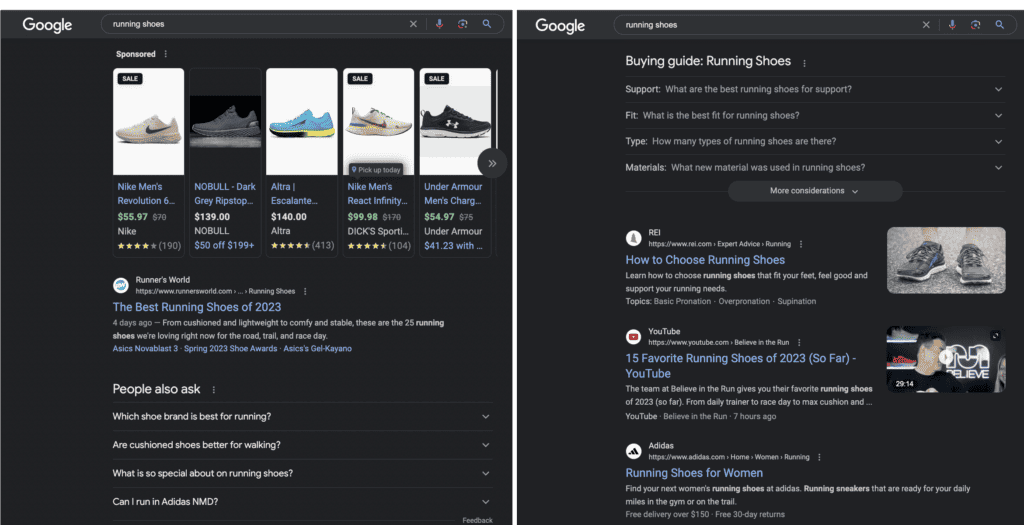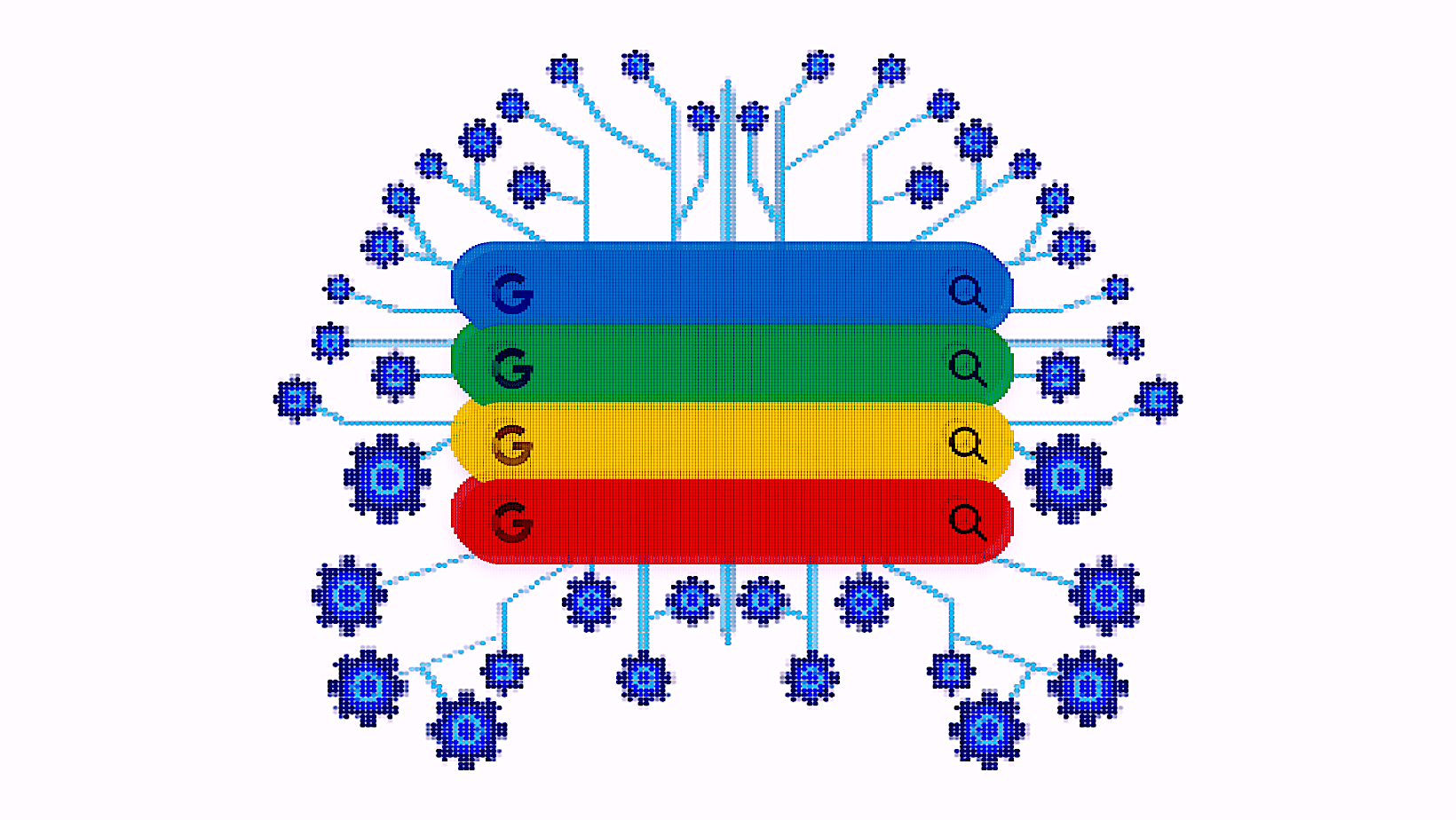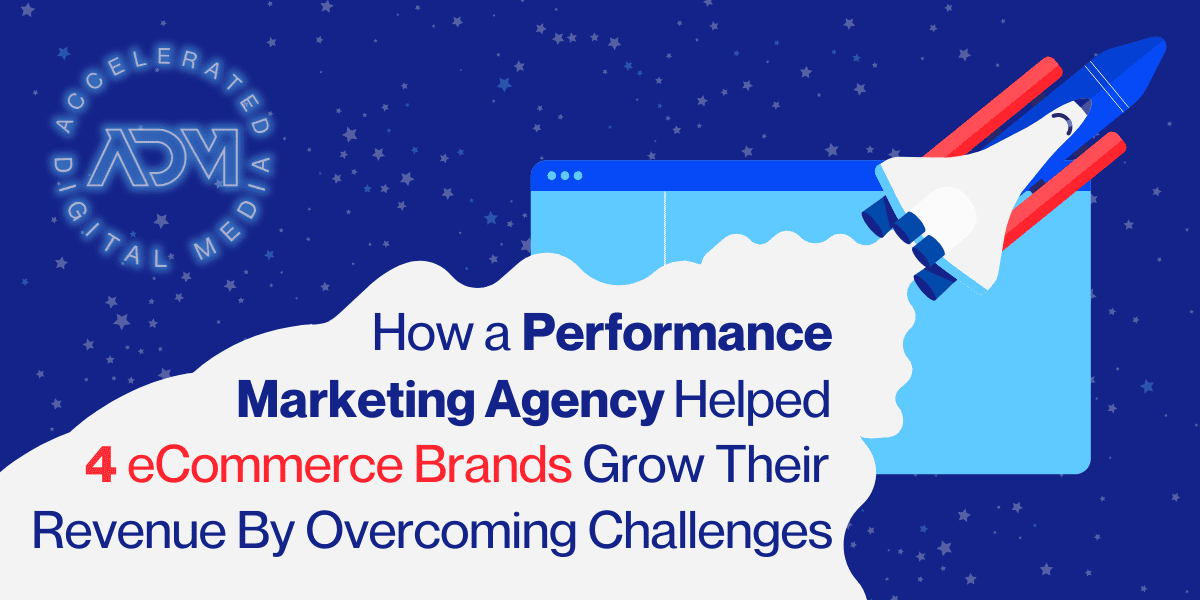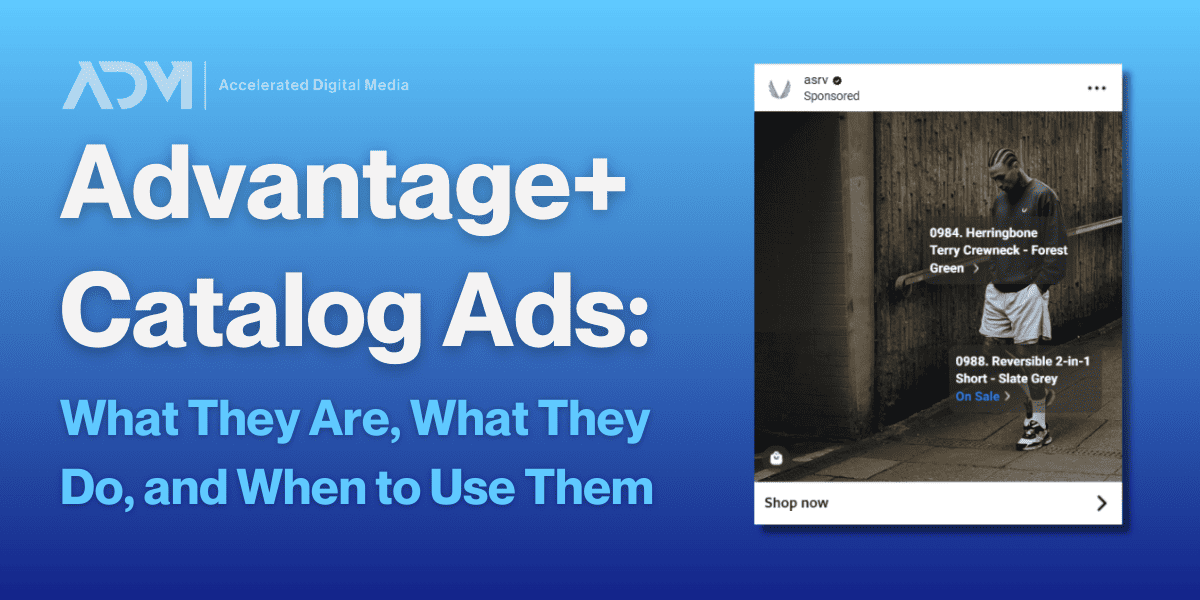Few companies have shaped the way people use the internet to the extent that Google has. Once upon a time, people typed actual URLs into their browsers to go to specific websites—but Google’s prowess as a search engine made it the starting point of many (or even most) web experiences. Whether we’re looking for an item or trying to satisfy our curiosity, nearly 70% of web journeys now begin with a search engine.
But over the past few years, Google’s search engine results page (SERP) has noticeably transformed—and artificial intelligence (AI) is the reason why. In this blog, we’ll take a look at what has changed, how we got here, and what the changes mean for advertisers, consumers, and maybe even Google itself.
How Has Google’s Search Engine Results Page Changed?
Gone are the days of 10 blue links and pages upon pages of results. Google increasingly employs a highly-visual, infinitely-scrolling SERP that offers a huge breadth of content formats.

These come from both organic and paid results. In the last few years, Google began pulling relevant images from organic matches into the main SERP (rather than just the Images tab). Video results from YouTube—another Google property—often appear prominently whenever applicable. And new ad elements, like product listing ads or regular search ads with image extensions, are sprinkled throughout the SERP for any query that could imply a purchase intent.
What was once a simple, straightforward list of potential resources is now a colorful pastiche of formats and options.
How Has AI Changed the Google SERP?
AI has been a buzzword for decades, but even despite the current chatbot craze, it’s often easier to find hype than tangible examples of its impact. AI tech that can quickly scan multimedia formats to identify meaning and relevance, however, is the basis of Google’s evolving SERP.
Google introduced its “Multitask Unified Model” (MUM) in 2021. Although they didn’t refer to it as AI at the time, that’s what it is: A computing framework that “understands” and can generate language; capable of developing “a more comprehensive understanding of information and world knowledge than previous models”; that is also “multimodal, so it understands information across text and images and, in the future, can expand to more modalities like video and audio.”
Google doesn’t use the MUM name much anymore, but they have begun to refer to AI extensively—and the many ways it is changing their search experience.
What Does the New SERP Mean for Users?
In short, these changes make for a busier search process. Both organic and paid visual elements now live throughout the search page, in addition to the text-based paid and organic search results. Google also switched to infinite scroll on mobile in 2021 and desktop towards the end of 2022, allowing for an unending stream of visual integrations.
For users, this might be a double-edged sword. Some organic AI integrations—like “how-to” videos that may populate when you query “how to fix a bike chain”—might reduce the time it takes for users to find necessary resources or guidance they are seeking. On the other hand, an increasingly-cluttered search experience may force some users to spend more time digging for solutions or products they are looking for, especially if advertising contributes significantly to that clutter.
What Do Advertisers Need to Know About the New SERP?
While organic image and video results contribute to the changing SERP, much of the shift is due to new AI-driven Google Ads formats. Google has been giving advertisers new campaign types that focus less on audience building and more on delivering highly-visual and engaging ads. That means there are quite a few aspects that advertisers have to consider.
1. Performance Max is Changing the SERP—and Non-Brand Search
Performance Max campaigns are the Google Ads feature that eats up a large portion of new real estate on the SERP. Performance Max campaigns are a novel advertising tool that uses Google’s AI to identify in-market users, which takes much of the audience-building burden off of advertisers. These ads can deploy in numerous formats across the Google ecosystem, but most notably they have replaced Google’s old Shopping campaigns/PLAs as Google’s premier eCommerce tool.
Because Performance Max relies less on audiences and keywords and more on AI-determined relevance and purchase intent, any query that may have shopping implications—like “shoes” or “Ford truck”—is likely to clutter the SERP with numerous PLAs. This renders traditional non-brand search a significantly less potent tool: Even if you’re using image extensions in those ads, the PLAs have a cleaner presentation that includes important elements like product photography, item descriptions, prices, and offers.
2. Smaller Advertisers Will Need to Innovate
Between organic elements like video and website image integrations and the new Google Ads functions like image extensions and Performance Max campaigns, the visualization of the SERP gives an advantage to larger companies. Imagine you Google “sneakers”: A large manufacturer like Adidas or Nike will have thousands of pictures on their site, likely with exceptional SEO structure. They’ll command the traffic and site authority to rank high in organic text results. And they’ll likely have a substantial enough Google Ads budget to deliver numerous Performance Max PLAs throughout the SERP.
For smaller advertisers without the budget or historical SEO infrastructure, it’s easy to get crowded out. It used to be a joke in advertising that the best place to hide something was on the second page of Google—but even now with infinite scroll, users aren’t scrolling forever. If major brands are eating most of the prime real estate, smaller advertisers and startups could struggle to gain market share. Where previously these brands could deliver in lower ad positions and likely be seen, or punch above their weight a bit with a big budget to bubble to the top of some search results, it’s harder than ever for that to happen.
3. Creative and CRO Are More Important Than Ever
With Google’s newfound emphasis on an AI-driven visual experience, companies will need to find ways to stand out among a more vibrant—and cluttered—SERP. That conundrum pushes creative services and conversion rate optimization (CRO) to the forefront.
Having good creative is now more important than ever. A brand might’ve once stood out simply by using image extensions, but with so many visual elements now populating the SERP, the emphasis shifts to having the best images in your image extensions and PLAs. And because many of those visuals can now be incorporated into the SERP organically, it’s vital that the same attention to creative detail apply to images and videos contained on the website—and that those high-quality creative assets receive proper SEO tagging to increase the likelihood of appearing organically.
Given that it’s harder than ever to stand out in this increasingly-busy search landscape, brands will need to extract maximum value from the clicks they do get—meaning CRO becomes imperative. If smaller advertisers struggle to capture the same amount of web traffic they once did through Google Ads, they need to extract the most value possible from the clicks they do get.
What Changes are Coming to the SERP?
Despite all this change, the SERP will continue to evolve even more dramatically. As we’ll detail in an upcoming blog, Google has announced plans to incorporate generative AI into search using its chatbot tool, Bard.
As the Google experience continues to change, advertisers will need to stay on their toes and current with all of the new features and possibilities. No matter how the tools develop, paid search isn’t going anywhere—Google Ads is central to Google’s overall business, and it will remain a vital piece of the digital marketing puzzle no matter what the SERP looks like down the road. For some brands and agencies, that might be intimidating. But at ADM, we welcome the challenge of finding how to best stand out on the ever-evolving SERP.




